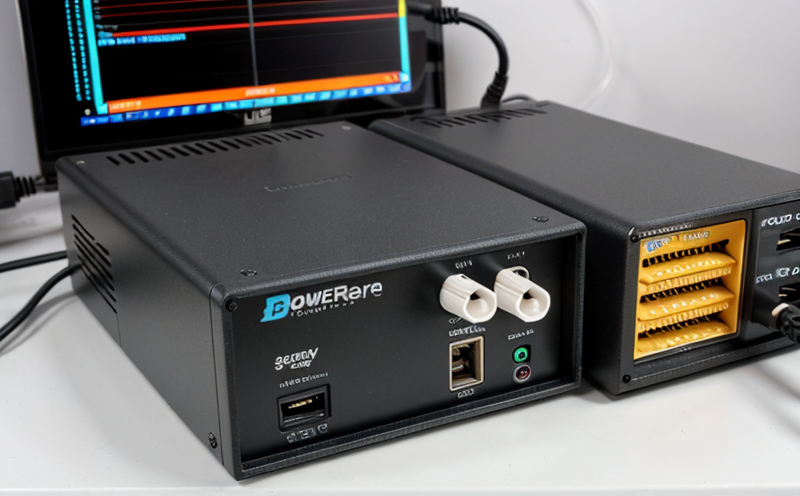CSA C22 2 Power Supply Electrical Safety Testing
The CSA C22.2 No.1 Standard for Electrical Equipment for Use in Homes, Buildings and Similar Premises addresses the safety requirements for electrical equipment used in residential and commercial settings. Within this standard, CSA C22.2-1502 specifically focuses on testing power supplies and chargers to ensure they meet stringent safety criteria.
The primary goal of this test is to verify that all components of the power supply or charger are constructed in a manner that minimizes risk to users. This includes insulation integrity, electrical connections, overcurrent protection, and other critical aspects. The standard is designed to protect consumers from hazards such as electric shock, fire, and other potential risks associated with improper design.
The testing process involves several key steps:
- Visual inspection of the unit for any visible damage or defects
- Measurement of insulation resistance to ensure it meets specified minimum values
- Testing for overcurrent protection to confirm that the device will shut off in case of excessive current flow
- Evaluation of the power factor and efficiency of the charger or power supply
- Verification of labeling and documentation required by the standard
- Conducting thermal stress tests to ensure components do not overheat under normal operating conditions
- Testing for electromagnetic compatibility (EMC) to ensure minimal interference with other electronic devices
The results of these tests are documented in a detailed report that includes all measurements and observations. This report serves as evidence that the product meets the stringent requirements set forth by CSA C22.2-1502, thereby providing assurance to consumers and regulatory bodies.
By adhering to this standard, manufacturers can demonstrate their commitment to producing safe and reliable products. This is particularly important in sectors such as consumer electronics, where trust in product safety is paramount. The test also helps companies comply with international regulations that may require adherence to CSA standards for entry into certain markets or for specific applications.
Failure to meet these requirements can result in recalls, fines, and damage to the brand's reputation. Thus, investing in thorough testing early in the development process is crucial.
Why Choose This Test
- Enhanced Product Safety: Ensures that power supplies and chargers meet stringent safety standards, reducing risks of accidents or malfunctions.
- Regulatory Compliance: Helps manufacturers comply with international regulations and local laws without facing penalties or recalls.
- Maintained Reputation: Demonstrates a commitment to quality and reliability, boosting brand reputation among consumers.
- Market Access: Facilitates entry into markets that require adherence to CSA standards for specific applications.
- Customer Trust: Builds confidence in the safety of products, leading to higher customer satisfaction and retention rates.
- Cost Efficiency: Early testing can save costs by identifying issues before full-scale production begins.
In summary, choosing this test is a strategic decision that prioritizes product safety, compliance, and market success. It ensures that consumers have access to reliable and safe power supplies and chargers, which are essential for modern electronics usage.
Quality and Reliability Assurance
The process of CSA C22 2 Power Supply Electrical Safety Testing is designed not only to identify immediate safety risks but also to establish a robust quality assurance framework. This involves meticulous preparation, execution, and documentation that guarantees the integrity and reliability of each unit tested.
Specimen Preparation: Before testing begins, specimens undergo thorough cleaning and inspection. Any visible damage or defects are noted and documented to ensure accurate results. This step is crucial for maintaining consistency in test outcomes.
Instrumentation: High-precision instruments are used throughout the process to measure critical parameters accurately. These include multimeters for voltage and current, thermal cameras for heat detection, and specialized EMC testers for interference checks.
Testing Procedures: Each component is tested under controlled conditions to simulate real-world usage scenarios. This includes running units through a range of input voltages and currents, observing how they respond to overloads or short circuits, and measuring their efficiency levels.
Data Collection and Analysis: Extensive data points are collected during each test run. These include temperature readings, waveform analyses, and performance metrics. All information is meticulously analyzed to identify any discrepancies from the expected outcomes.
The final step in this process involves compiling all findings into comprehensive reports. These documents serve as valuable tools for quality assurance teams, highlighting areas of improvement needed within manufacturing processes or design revisions required based on test results.
Competitive Advantage and Market Impact
Adhering to CSA C22 2 Power Supply Electrical Safety Testing offers several competitive advantages that can significantly impact a company's market position. Firstly, it enhances brand reputation by demonstrating a strong commitment to product safety and quality.
Secondly, compliance with this standard opens doors to international markets where certain jurisdictions require adherence to CSA standards for specific applications or regulatory purposes.
Thirdly, early adoption of these practices can provide an edge over competitors who may not yet be fully aware of the latest requirements. By staying ahead in terms of safety measures, companies position themselves as leaders in their industry.
Futhermore, successful completion of this test can lead to enhanced customer trust and satisfaction levels, which are crucial factors influencing purchasing decisions.
In conclusion, incorporating CSA C22 2 Power Supply Electrical Safety Testing into your product development cycle not only ensures compliance with industry standards but also contributes positively towards achieving long-term business goals. It fosters innovation while maintaining high levels of safety and reliability across all products."





